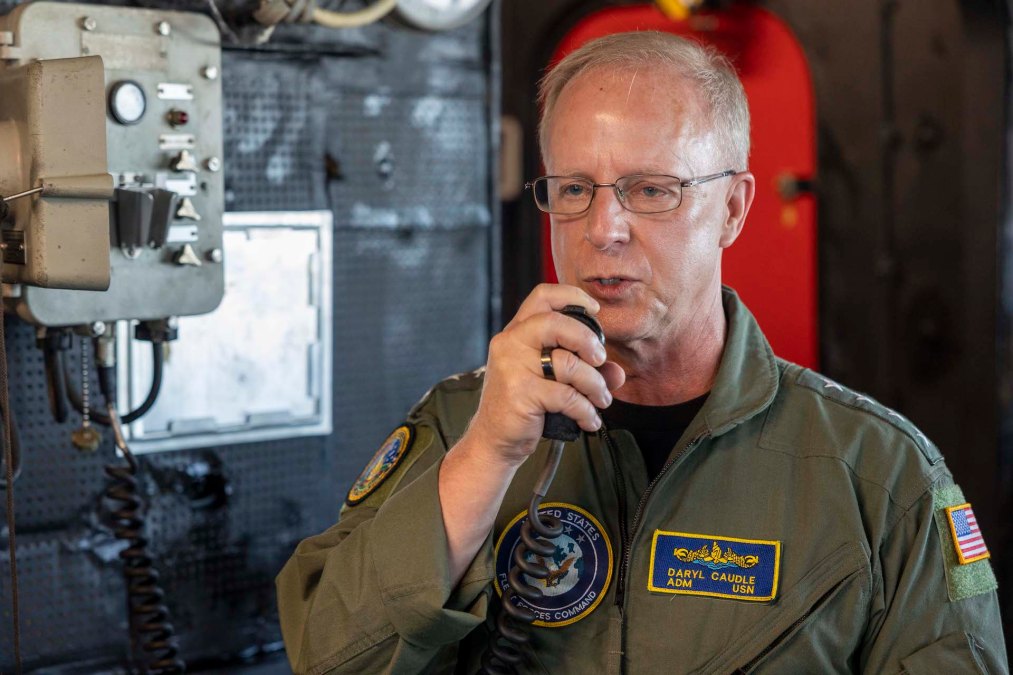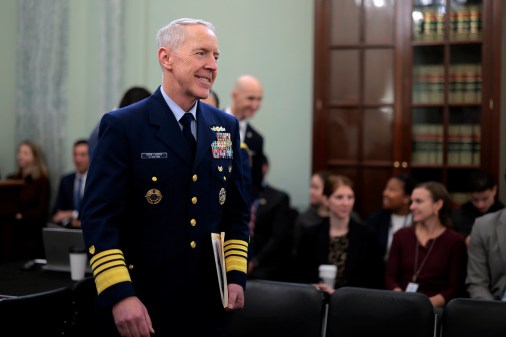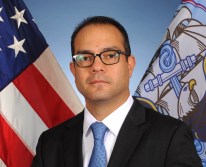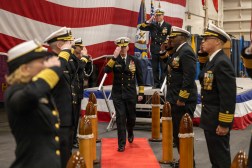Senate confirms Adm. Daryl Caudle as chief of naval operations

The Navy is getting a new top officer after the Senate on Thursday night confirmed President Donald Trump’s nomination of Adm. Daryl Caudle to be chief of naval operations.
When Caudle takes the helm, he will be the first Senate-confirmed CNO since Trump fired Adm. Lisa Franchetti from that post in February without explanation. Adm. James Kilby, the Navy’s vice chief, has been serving as acting CNO since Franchetti was removed.
Caudle told members of the Senate Armed Services Committee during his confirmation hearing last week that he approves of Franchetti’s CNO Navigation Plan, or strategic vision, that was released last year. That plan included Project 33, an effort to accelerate the acquisition and fielding of unmanned systems, AI and “information dominance” capabilities to deter or defeat a Chinese attack on Taiwan or other U.S. interests in the Indo-Pacific.
Caudle told lawmakers that his top priorities for Navy transformation, if confirmed, would be to invest in platforms, sensors and weapons systems that are “modular, scalable and built for rapid upgrade cycles” to stay ahead of emerging threats; boost sailors and warfighters through advanced training, leadership development and talent management; and “accelerate delivery of integrated, networked capabilities across the joint force, including unmanned systems, artificial intelligence, and resilient C3 architectures to enable decision advantage and operational dominance in contested environments.”
Adopting cutting-edge tech such as AI, uncrewed platforms, cyber tools and data-driven decision-making could enable the Navy to “outpace adversaries by leveraging faster learning curves and feedback loops from the assessment of existing combat operations,” he wrote in response to senators’ advance policy questions ahead of this confirmation hearing.
Caudle suggested a more aggressive push to adopt robotic platforms might be needed if Navy shipbuilding programs face further budget constraints or cost growth problems.
“Robotic and Autonomous Systems (RAS), also referred to as Unmanned Systems, are a force multiplier already being employed across a wide range of missions. Prioritizing the integration of RAS at scale, as appropriate, into naval and joint force architecture would be a necessary step [to deal with further fiscal constraints]. Additionally, we could potentially expand and accelerate current RAS systems further across the fleet, in all cases focusing on affordability, training, and interoperability with manned platforms,” he wrote.
The nomination of Caudle — a four-star who has been serving as commander of Fleet Forces Command — for the CNO role wasn’t a controversial pick.
Caudle’s confirmation was approved by voice vote, along with a slew of other military nominations, as the Senate nears its August recess.






